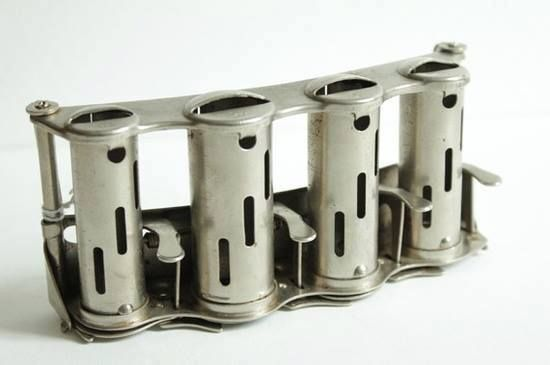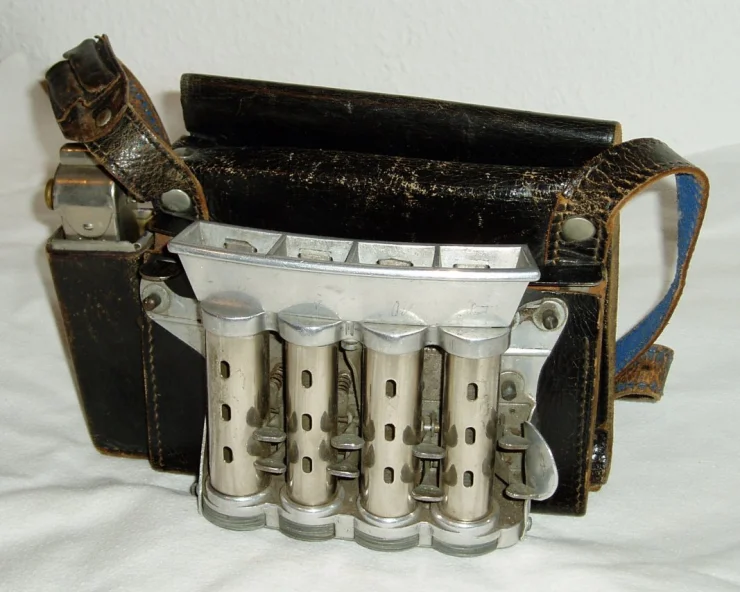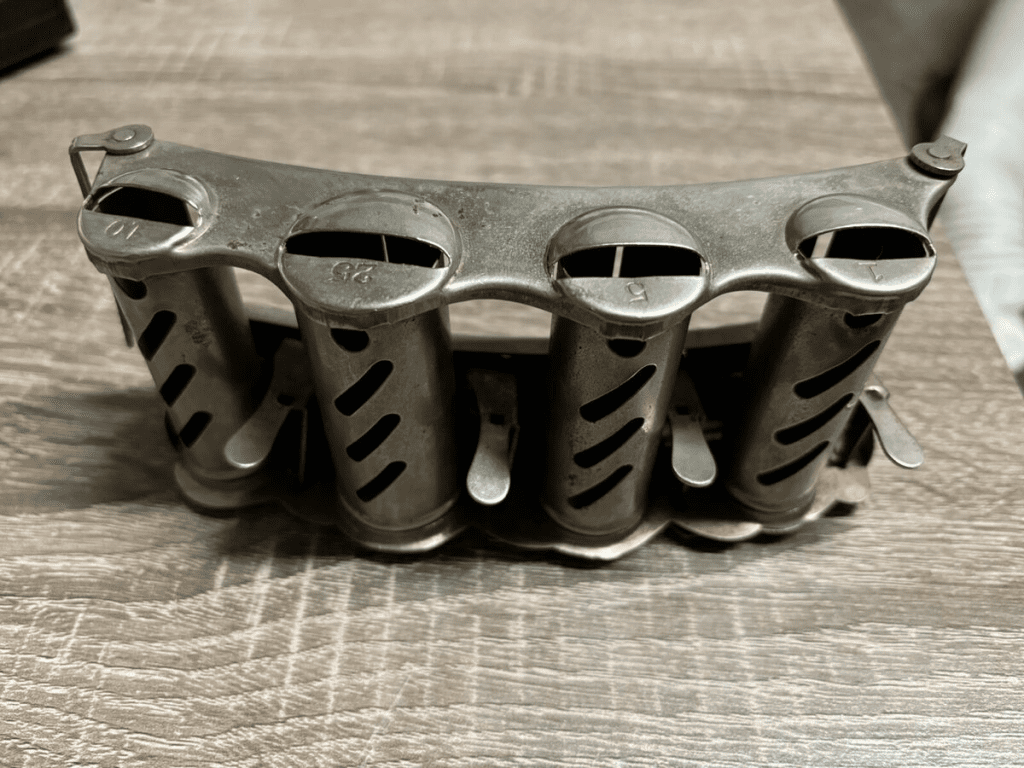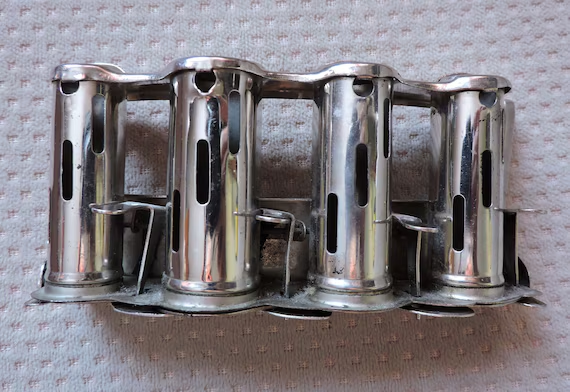If you’ve ever watched an old movie or TV show, you might have noticed bus drivers or conductors wearing peculiar contraptions on their belts, rapidly dispensing coins with a quick flick of the wrist. These vintage belt change dispensers, once an essential tool for professionals in transit and sales, are now charming relics of the past. Let’s delve into the history, functionality, and enduring allure of these practical devices.
What Are Belt Change Dispensers?

Belt change dispensers, also known as wearable coin changers or change dispensers, are compact devices designed to be worn on a belt. They typically feature multiple barrels, each designated for a specific coin denomination. With a quick pull of the lever corresponding to a coin barrel, the user can dispense coins one at a time, making them an indispensable tool for those who needed quick and easy access to change.
These devices found widespread use among bus drivers, conductors, ticket sellers, and street vendors who relied on rapid transactions. Today, belt change dispensers serve as a nostalgic reminder of a time before digital payments took over.
The Invention and Early History of Belt Change Dispensers
The invention of the belt change dispenser is credited to Jacques L. Galef, a creative inventor whose patents for such coin change machines date back as early as 1921. Although the exact year of the first belt-mounted change dispenser’s debut is unclear, Galef’s invention quickly became popular due to its convenience and simplicity.
In the early 20th century, change dispensers were common in various public transit systems around the world. With their simple yet reliable mechanics, these dispensers reduced the time needed for transactions, allowing operators to issue change quickly and continue on their routes efficiently. As the popularity of public transportation grew, so did the demand for such practical devices.
How Do Belt Change Dispensers Work?
The beauty of the belt change dispenser lies in its simplicity. No batteries, no electronics—just a straightforward mechanical design that relies on levers, springs, and gravity. Here’s a breakdown of how these handy devices function:
- Coin Storage: Each dispenser barrel holds a specific coin denomination. Coins are loaded into the top of each barrel, with a spring-loaded lever at the bottom.
- Lever Mechanism: Each barrel has a lever that corresponds to the denomination it holds. When the lever is pulled, it releases one coin at a time through the bottom of the barrel.
- Spring-Loaded Dispensing: A spring mechanism inside each barrel controls the release of coins. As the lever is pulled, the spring allows precisely one coin to drop, ensuring a quick and easy way to distribute change.
- Refilling the Dispenser: When the dispenser runs low on coins, the user can simply open the top of each barrel, refill it with the correct denomination, and secure it. The simplicity of the design made refilling and maintenance straightforward.
This basic yet effective design made the belt change dispenser a must-have tool for anyone handling frequent cash transactions in a fast-paced environment.
How Many Coins Could a Belt Change Dispenser Hold?
The coin capacity of a belt change dispenser varied based on the model and manufacturer, but most standard dispensers could hold about one roll of coins per denomination. This generally meant:
- Around 40 quarters
- 50 dimes
- 40 nickels
- 50 pennies
These quantities made belt change dispensers ideal for handling moderate cash flow, such as on public buses or in street vending, where speed was essential, but carrying bulky rolls of coins was impractical.
Who Used Belt Change Dispensers, and Why Were They So Popular?

Belt change dispensers were especially popular among individuals who worked in roles that involved constant cash handling and quick customer interactions. Some of the most common users included:
- Bus and Train Conductors: With a steady flow of passengers paying with cash, transit operators needed to dispense change quickly to keep the lines moving. The belt change dispenser allowed them to maintain the pace without fumbling for loose coins.
- Street Vendors and Ticket Sellers: Whether selling newspapers, tickets, or snacks, vendors could quickly provide change for customers and avoid delays, making their businesses more efficient.
- Cafeteria and Theater Employees: In places where cash was king, cafeteria workers, and theater employees used belt dispensers for fast transactions, ensuring they could serve more customers in less time.
The practical design and ease of use made belt change dispensers incredibly popular until electronic cash registers and digital payment systems began to replace them.
What Happened to Belt Change Dispensers?
With the rise of digital payment methods and the decline of cash transactions, belt change dispensers have largely disappeared from public transit and retail. Many of the companies that manufactured these dispensers ceased production as demand dwindled.
However, vintage change dispensers have found new life among collectors and enthusiasts. Today, they are sought-after collectibles, especially for those interested in transportation memorabilia or vintage vending equipment. The robust and functional design of these devices continues to attract admiration, and many people appreciate their historical significance and practical charm.
The Appeal of Vintage Belt Change Dispensers Today

Though they’re no longer in common use, belt change dispensers hold a unique place in the world of collectible items. Here are a few reasons why they’re still popular today:
- Nostalgia: For those who grew up using public transit or have fond memories of simpler times, belt change dispensers evoke a sense of nostalgia. They remind us of an era when coins were king, and interactions were simpler.
- Craftsmanship: Unlike modern gadgets, these dispensers were built to last. Their all-metal construction and reliable mechanical parts exemplify a time when products were made with durability in mind.
- Practical Use for Small Businesses: Although rare, some small businesses and street vendors still use belt change dispensers for events or as part of their nostalgic brand appeal. Retro food trucks and vintage-themed businesses find these dispensers to be a unique way to enhance their customer experience.
- Collectibility: Belt change dispensers are highly collectible, especially those made by well-known manufacturers like Johnson Fare Box Co. and Brandt Automatic Cashier Company. Collectors value dispensers with original branding, which showcase the styles and advertising from different eras.
Where Can You Find Vintage Belt Change Dispensers Today?
For those interested in acquiring a piece of this retro technology, vintage belt change dispensers can often be found at antique stores, flea markets, and online marketplaces like eBay. Prices vary based on the model’s condition, age, and rarity. Collectors often search for dispensers with original engravings or those used by well-known transit companies, as these are typically more valuable.

Restoration enthusiasts may also enjoy finding dispensers that need a little TLC. With some basic tools and a bit of patience, many of these devices can be restored to working order, making them a rewarding project for those who appreciate vintage machinery.
Conclusion: A Legacy of Efficiency and Charm
Vintage belt change dispensers may no longer be in everyday use, but they serve as a fascinating reminder of a bygone era when coins and quick cash transactions ruled. These simple yet ingenious devices are a testament to the ingenuity of an age before digital payments, designed to solve real-world problems with durable craftsmanship and timeless appeal.
For collectors and nostalgia enthusiasts, vintage change dispensers are more than just relics; they’re symbols of a time when bus drivers, street vendors, and ticket takers depended on these tools to keep their work running smoothly. As you discover more about these pieces of history, consider adding one to your collection—it just might take you back to a simpler time with each satisfying clink of the lever.